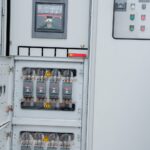Understanding electric heating basics
Electric heating systems are becoming increasingly popular in modern homes. These devices convert electrical energy into heat, providing warmth efficiently. They come in various forms, including baseboard heaters, wall-mounted units, and portable options. Electric heaters offer precise temperature control, allowing users to adjust settings easily. Most models are equipped with thermostats, ensuring consistent comfort levels. Installation is often simpler compared to traditional heating systems, requiring minimal modifications to existing structures.
One significant advantage of electric heating is its high energy efficiency. Nearly 100% of the electricity consumed is converted into heat. This direct conversion process eliminates energy loss associated with fuel combustion. Additionally, electric heaters produce no emissions at the point of use, contributing to better indoor air quality. They operate silently, making them ideal for bedrooms and quiet spaces. electric heating https://onninen.pl/en/products/Heating-systems/Electric-heating systems also require less maintenance than gas or oil-based alternatives.
When considering electric heating, it’s essential to understand the cost implications. While installation costs are generally lower, operational expenses can vary depending on electricity rates. In regions with affordable electricity, these systems can be cost-effective. However, in areas with high electricity prices, running costs may be higher than other heating methods. It’s crucial to calculate long-term expenses before making a decision. Many homeowners combine electric heating with other energy-saving measures for optimal efficiency.
Types of electric heaters for different spaces
Electric heaters come in various types, each suited for specific spaces and needs. Convection heaters are popular for larger rooms, circulating warm air throughout the space. These units often feature built-in fans to enhance heat distribution. Radiant heaters, on the other hand, are ideal for spot heating. They emit infrared radiation, warming objects and people directly without heating the air. This makes them efficient for outdoor areas or poorly insulated spaces.
For bathrooms and small areas, wall-mounted panel heaters are an excellent choice. These slim units save floor space and provide quick, efficient heating. Many models come with timers and programmable settings for energy-saving operation. Portable electric heaters https://onninen.pl/en/products/Heating-systems/Electric-heating/Electric-heaters offer flexibility, allowing users to move heat sources as needed. These come in various sizes, from small personal heaters to larger units capable of warming entire rooms.
Underfloor heating systems are gaining popularity in new constructions and renovations. This method involves installing heating elements beneath the floor surface. It provides even heat distribution and eliminates the need for visible heating units. While installation can be more complex, underfloor systems offer superior comfort and energy efficiency. They work well with various flooring materials, including tile, wood, and carpet.
Energy-saving features in modern electric heaters
Modern electric heaters incorporate numerous energy-saving features to enhance efficiency. Programmable thermostats allow users to set different temperatures for various times of the day. This ensures heating is reduced during periods when it’s not needed, such as nighttime or when the house is empty. Some advanced models even offer Wi-Fi connectivity, enabling remote control via smartphone apps. Users can adjust settings or turn off heaters from anywhere, preventing unnecessary energy consumption.
Zoning capabilities are another significant advancement in electric heating systems. This feature allows different areas of a home to be heated independently. By heating only occupied spaces, overall energy use is reduced. Many heaters now include occupancy sensors, automatically adjusting output based on room activity. These sensors can detect when a room is empty and lower the temperature accordingly. Some systems integrate with smart home platforms, optimizing heating based on user habits and preferences.
Energy-efficient electric heaters often incorporate eco modes or power-saving settings. These modes optimize energy use while maintaining comfort levels. Timer functions are common, allowing users to set specific operating hours. This prevents heaters from running unnecessarily when not needed. Some models feature adaptive start technology, which learns how long it takes to heat a room. This ensures the desired temperature is reached at the programmed time, without wasting energy by starting too early.
Maintenance and safety considerations
Proper maintenance is crucial for the longevity and efficiency of electric heating systems. Regular cleaning is essential to prevent dust accumulation, which can affect performance and pose fire risks. Users should follow manufacturer guidelines for cleaning procedures. It’s important to inspect cords and plugs periodically for signs of wear or damage. Any frayed wires or loose connections should be addressed immediately by a qualified electrician.
Safety is paramount when using electric heaters. Always maintain a clear space around heating units, keeping flammable materials at least three feet away. Never use extension cords with electric heaters, as they can overheat and cause fires. Modern heaters often include safety features such as tip-over protection and overheating sensors. These automatically shut off the unit if it’s knocked over or reaches unsafe temperatures. It’s advisable to choose models with these safety features, especially in homes with children or pets.
When installing new electric heating systems, it’s crucial to consider the electrical capacity of your home. Overloading circuits can lead to tripped breakers or, in worst cases, electrical fires. Professional installation is recommended for hardwired systems to ensure proper wiring and circuit protection. For portable heaters, avoid plugging multiple high-wattage devices into the same outlet. Regular electrical system inspections by certified professionals can help identify potential issues before they become hazards.





